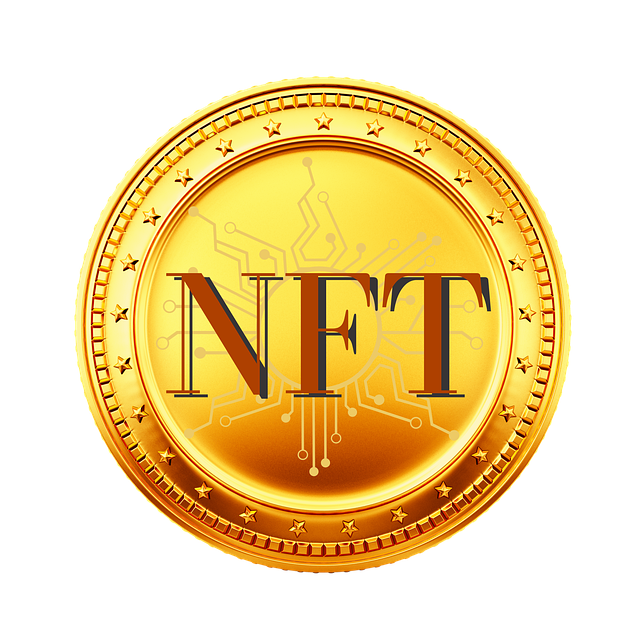Mastering crypto signal group discord Strategies
Author: Jameson Richman Expert
Published On: 2025-10-20
Prepared by Jameson Richman and our team of experts with over a decade of experience in cryptocurrency and digital asset analysis. Learn more about us.
Crypto signal group Discord communities can be powerful tools for traders who want timely trade ideas, collaborative analysis, and automated execution hooks — when used correctly. This article explains what these Discord groups are, how they work, how to evaluate and join trustworthy servers, how to use signals responsibly, and practical automation, risk-management, and educational strategies to turn signals into consistent results.

What is a crypto signal group on Discord?
A crypto signal group Discord is a Discord server or channel where experienced traders, analysts, or automated systems post trade ideas for cryptocurrency markets. Signals usually include an entry price, stop-loss, target(s), time frame, and rationale. Members can discuss the trade, view charts, and sometimes use bots or webhooks to execute trades automatically on connected exchanges.
Discord provides real-time chat, voice channels, pinned messages, roles, and integrations (webhooks, bots) that make it an attractive platform for live trading communities compared with legacy platforms like email or forums.
Why traders use Discord for crypto signals
- Immediate delivery: Real-time notifications via mobile and desktop reduce latency for time-sensitive trades.
- Community verification: Public discussion allows group members to question and validate a signal.
- Multimedia support: Charts, screenshots, voice calls, and screen sharing help convey complex setups.
- Automation-ready: Webhooks and bots can translate a signal to an API call for execution.
- Roles and trust: Reputation systems (verified analysts, mod teams) help members identify signal quality.
Common types of signals you’ll see
- Breakout signals: Enter when price breaks above resistance or below support.
- Swing signals: Trade major swings on higher timeframes (4H, daily).
- Scalp signals: Short-term trades on 1–15 minute charts for small profits.
- Trend-following signals: Entries based on moving averages, trendlines, or momentum.
- Mean-reversion signals: Buy dips or short rallies back toward equilibrium.
- Automated bot signals: Signals emitted by algorithmic strategies or backtested bots.

How a typical signal is structured (example)
A well-structured signal usually contains:
- Timestamp — When the signal was generated.
- Pair — e.g., BTC/USDT.
- Direction — Long or Short.
- Entry — Exact price or range to enter.
- Stop-loss — Price to exit if wrong.
- Targets — TP1, TP2, etc., with recommended percentages or prices.
- Rationale — Brief technical or fundamental reason.
- Timeframe — 15m, 1H, 4H, daily.
- Confidence/Allocation — e.g., “High confidence, 2–4% of position size.”
How to evaluate a crypto signal group Discord — a checklist
Not all Discord signal groups are equal. Use this checklist before joining or paying for access:
- Transparency: Are historical signals and track records visible and verifiable?
- Signal format consistency: Do signals follow a standard template (entry, stop, target)?
- Moderator activity: Active moderators and clear rules reduce spam and scams.
- Reputation: Check reviews, social proofs, and third-party mentions.
- Community engagement: High-quality discussion and chart sharing indicate real analysis.
- Trial period or free tier: A way to test signals before committing financially.
- Refund policy: Clear terms for paid plans.
- Security practices: Do they instruct safe API usage (read-only vs trading permissions)?
Red flags: avoid these warning signs
- Unverifiable or fabricated track records.
- Pressure tactics (limited spots, urgency) to buy memberships.
- “Guaranteed” returns or unrealistic profit claims.
- Asking for full API keys with withdrawal permissions (never share withdrawals access).
- Signals posted with no rationales or conflicting instructions.

Managing risk: convert signals into a safe trading process
Signals are trade ideas, not certainties. Implement structured risk management to protect capital.
Position sizing
Decide risk per trade as a fixed percentage of your account (commonly 0.5–3%). Example:
- Account size: $10,000
- Risk per trade: 1% = $100
- Entry: $20, Stop-loss: $18 (10% risk per share) → Position size = $100 / (0.10 * $20) = 50 units
Use stop-loss and take-profit orders
Always set stop-loss orders. Consider staggered take-profit levels to lock gains while leaving a portion to run.
Diversification and correlation
Avoid putting multiple correlated signals on at once (e.g., large-cap altcoins that move with BTC), which magnifies risk.
Automation: integrating signals with bots and webhooks
Many Discord groups provide webhook-compatible signals or bots that can auto-send signals to trading software. Automation reduces manual latency but introduces technical and security considerations.
Typical automation flow
- Signal posted on Discord with webhook payload.
- Middleware service (e.g., Zapier, custom server) parses the signal.
- Service calls exchange API to place order (limit, market, stop-limit).
- Trade execution, monitoring, and alerts sent back to Discord.
Before connecting automation, learn about API keys and permissions. For security, create API keys with trading permissions only, avoid enabling withdrawals, and limit IP access where possible.
To evaluate whether bots and automation are right for you, read a detailed analysis on automated trading at this article: Are crypto bots worth it in 2025?
Practical examples: using a crypto signal group Discord
Below are two scenarios that show how traders can use signals responsibly.
Example 1 — Swing trade from a verified analyst
- Signal: Buy ETH/USDT at 2,000–2,050, stop-loss 1,850, target 2,400 and 2,800.
- Rationale: Breakout above consolidation with increasing On-Balance Volume (OBV).
- Action: Allocate 1.5% of account, set stop-loss, TP1 at 25% of position, TP2 for remaining.
- Result management: If price hits TP1 and momentum remains strong, move stop-loss to breakeven for remaining position.
Example 2 — Scalping signal with automation
- Signal: BTC/USDT scalp — long at 69,500, stop 69,200, target 69,900.
- Action: Use small allocation, automated market or limit order with a trailing stop to protect gains.
- Risk controls: Disable trading on low-liquidity pairs during high slippage events (major news releases).

How to choose the best crypto signal group Discord for your trading style
Match the group to your goals and time horizon.
- Day trader / scalper: Choose communities with high-frequency scalp channels, live voice rooms, and bot support.
- Swing trader: Seek groups with higher timeframe analysis, macro commentary, and risk allocation guidance.
- Long-term investor: Favor groups that provide fundamental research, tokenomics review, and on-chain metrics.
Also consider educational resources the community offers. If you’re starting, paid groups that include structured learning paths and mentorship can accelerate development. For courses blending trade finance and macro perspective, see options such as trade finance courses and global trade opportunities to understand how broader financial skills apply to crypto markets.
Comparing Discord to other platforms (Telegram, Twitter, Signal)
| Feature | Discord | Telegram | Twitter/X |
|---|---|---|---|
| Real-time channels | Yes, multiple channels, voice | Yes, channels & groups | Limited; public feed |
| Role-based access | Yes | Limited | No |
| Multimedia & threads | Rich | Good | Public threads |
| Bot/Webhook integration | Strong | Moderate | Limited |
Discord excels at moderated communities with deep discussion and automation, while Telegram is simpler and widely used for fast broadcast-style signals. Twitter is best for public commentary and announcements.
Verifying signal performance: what to request
Before trusting a paid signal group, request transparent evidence:
- Exported trade logs or screenshots covering months, not just winning streaks.
- Full trade history with position sizes and P&L (preferably in CSV).
- Proof that archived signals were posted before trades were executed (timestamps help).
- Third-party verification is gold — services that audit trading performance add credibility.

Legal and tax considerations
Trading signals do not guarantee profit, and depending on your country, gains are taxable. Keep accurate records of trades for tax reporting. For general tax guidance in financial markets, see trusted resources like the U.S. IRS information on virtual currencies (if relevant to your jurisdiction) or consult a tax professional.
Education and continuous improvement
A crypto signal group Discord is a tool — not a replacement for education. Strengthen your trading skills by learning technical analysis, on-chain metrics, and macro drivers. High-quality crypto resource roundups and website reviews can help you find reputable learning platforms. For example, read this in-depth guide to the best cryptocurrency websites for 2024 to expand your research toolkit: best cryptocurrency websites in 2024.
If you’re interested in understanding exchange cost structures, fees can turn a promising signal into an unprofitable trade. Learn how trading fees affect your strategy in this article about global trading fees and their impact: understanding global trading fees.
Security & privacy best practices for Discord traders
- Two-Factor Authentication (2FA): Enable 2FA on your Discord account and exchange accounts.
- API key hygiene: Create separate API keys for automation and revoke keys immediately if compromised. Never give anyone withdrawal access.
- Use role-based permissions: In paid servers, use roles to limit access to sensitive channels.
- Beware of phishing links: Confirm links before clicking; scammers mirror server names and URLs.
- Use a secure middleware: If you route webhooks through third-party services, ensure HTTPS, authentication, and logging are in place.

Monetization models for Discord signal groups
Signal groups commonly monetize through:
- Subscription plans (monthly/annual).
- Tiered access (free channels + paid premium rooms).
- One-on-one mentorship, paid group coaching.
- Affiliate/referral links (be cautious — may bias recommendations).
Assess whether the benefits justify the cost. Free trials and documented performance are strong indicators of transparency.
How to start your own crypto signal group Discord (brief guide)
If you plan to run a signal community, follow these steps for credibility and safety:
- Create clear rules and disclaimers: Include risk notices and privacy policy.
- Standardize signals: Use a consistent template for every signal.
- Record and publish performance: Keep a publicly accessible track record and timestamps.
- Use bots responsibly: Set up webhook templates and parsing rules to reduce errors.
- Moderate actively: Hire moderators to enforce rules and help new members.
- Educate members: Offer onboarding materials, tutorials, and links to resources.
Useful third-party resources and references
- Discord (software) — Wikipedia — Background on Discord features and history.
- Cryptocurrency — Wikipedia — Overview of crypto fundamentals.
- Risk management — Investopedia — Core risk management concepts for traders.
- Binance Academy — Practical guides on technical analysis, orders, and APIs.

Common FAQs about crypto signal group Discords
Are Discord signals legal?
Yes, sharing trade ideas is legal in most jurisdictions, but paid signal providers should avoid false advertising. Always follow local regulations and disclose compensation or conflicts of interest. For regulated advice (financial planning, investment management), check local licensing requirements.
Can signals be profitable?
Signals can be profitable, but outcomes depend on signal quality, execution speed, fees, slippage, and trader discipline. Historically, consistent profitability requires robust risk management and adaptability to market regimes.
Is it safe to automate trades from Discord?
Automation is safe if you follow API security best practices, use vetted middleware, and limit permissions. Test everything in a paper trading or sandbox environment before enabling live trading.
How much should I trust free signals?
Free signals can be useful for learning, but paid groups often provide higher-quality analysis and accountability. Always validate free signals with your own analysis before risking capital.
Closing checklist: get started responsibly
- Verify signal group transparency and track record.
- Start with small allocations and position sizing rules.
- Use stop-losses and staggered profit-taking.
- Secure your accounts (2FA, API restrictions).
- Test any automation in a demo environment first.
- Educate yourself continually — combine signals with technical and fundamental analysis.
If you're building a broader research routine, combine Discord signals with trusted educational resources and fee-awareness. For example, review how trading fees can erode returns (understanding global trading fees), compare site and research sources (best cryptocurrency websites guide), and weigh the pros and cons of automating signals (automated trading solutions analysis).
For those wanting longer-term professional skills that intersect with crypto markets — such as finance, trade settlement, and compliance — exploring formal courses can provide a stable foundation. See perspectives on trade finance education and global opportunities for structured learning here: trade finance courses and global trade opportunities.
Final thoughts
Discord-based crypto signal groups can accelerate learning and provide timely ideas, but they are a supplement — not a substitute — for sound trading strategy. Prioritize transparent communities with verifiable performance, use disciplined risk management, secure your accounts, and treat signals as inputs into a broader trading plan. With the right approach, a reputable crypto signal group Discord can be a valuable component of your trading toolkit.